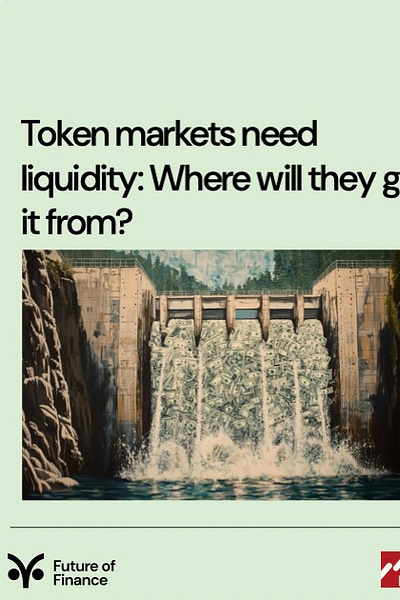Tokenization & Stablecoins Fail Without Liquidity
Why do so few bother even to mention that liquidity is key?
This is my daily post. I write daily but send my newsletter to your email only on Sundays. Go HERE to see my past newsletters.
HAND-CURATED FOR YOU
Amidst all the hype surrounding tokenization and stablecoins, you don’t hear many people discussing liquidity, and that’s a problem because it is the most critical factor determining their success.
Liquidity is everything in markets. It means that you can find buyers or sellers for an asset to create two-way market flows.
This may sound basic, but the ASSUMPTION that there will be a two-way market for an asset is fatal.
Just ask anyone who wanted to sell Terra/Luna in 2022, mortgage-backed securities in 2008, or the infamous meme stock Gamestop in 2024.
Without buyers or some cases, sellers, your asset will simply be stuck in limbo.
If you don’t think this applies to tokenized assets or even stablecoins, you are mistaken.
Just because stablecoins attract large volumes on crypto markets doesn’t mean they’ll be accepted at banks, exchanges, or other financial institutions.
For now, crypto markets drive stablecoin liquidity, but if banks start to play in this market and don’t want to accept a stablecoin, you can bet liquidity will suffer.
The same goes for tokenized assets, where the assumption seems to be “build it and they will come.” That is not a strategy for creating liquidity.
I love tokenization, but don’t be surprised if liquidity for two seemingly identical assets depends on the issuer and methodology. We’ve already seen this for tokenized US treasuries.
The problem is that all stablecoins and tokenized products are not created equal. Even stablecoins built under the US’s GENIUS Act will have subtle variations that will change their credit spread and potentially impact liquidity.
Most important of all is market sentiment.
If the market sours on the company backing the token, the structure, the assets, or the CEO is arrested, liquidity can disappear in a flash.
Never assume that anything but the most standard and broadly accepted stablecoin or tokenized asset will be liquid. Even then, be vigilant.
👉No Liquidity, No Tokenization or Stablecoins
🔹 Markets do not manufacture liquidity unaided. It must be created by specialist intermediaries, even in blockchain-based markets.
🔹 Specialist intermediaries, including regulated exchanges and insurers, help to generate liquidity by winning the trust of issuers and investors.
🔹 Tokenised money market funds foster liquidity by providing a yield-bearing form of cash and cash collateral on-chain.
🔹 The operational efficiencies of tokens are bound to encourage transactional activity but are mitigated by the fact most tokens are not yet fully “native.”
🔹 Fully “native” tokens will enjoy multiple liquidity-enhancing features, such as round-the-clock trading, instant settlement and transparent ownership.
🔹 Settlement of token transactions in central bank money would increase liquidity by attracting more institutional money.
🔹 By broadening the range of assets that can be transformed into financeable instruments, tokenisation can add liquidity to any asset class.
🔹 Clearing and netting of token transactions through a clearing house would add liquidity to token markets just as they add liquidity to traditional asset markets.




